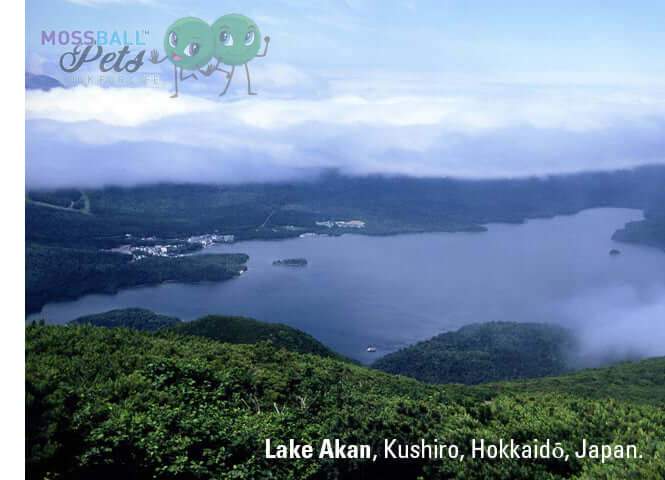History
The plant was named "marimo" by a Japanese botanist Tatsuhiko Kawakami (川上龍彦 Kawakami Tatsuhiko) in 1898. Mari being a bouncy play ball and Mo a generic term for plants that grow in water.
In the mid-1920's marimo in Lake Akan were greatly affected by both thievery and decreases in the lake's water level. Both marimo and their environment were under attack. To circumvent the marimo's looming threat of extinction in Lake Akan, the Marimo Festival was inaugurated.
In 1921 Marimo was designated as a Natural Treasure. As Lake Akan and the surrounding area began to develop, so too did the number of people wishing to possess this strangely beautiful algae. As their numbers decreased it became a top priority to protect the Marimo. Now, you can have your very own Marimo moss ball harvested from legal sustainable farms in Japan!
 Designation of marimo as a Natural Treasure ironically and inadvertently served to stimulate their theft from Lake Akan. As marimo became more widely known, people dealing in their theft and sale also emerged. It's said that in the 20's of the Showa Era (1940's) the store fronts in nearby Kushiro City offered rows of individually bottled marimo for between 30 to 200 yen ($0.30 to $2.00) per sphere while in the Tokyo area a single round marimo commanded the dear price of 1,000 yen ($10.00). Countless numbers of marimo were purchased by tourists and taken to locations throughout Japan and the rest of the world.
Designation of marimo as a Natural Treasure ironically and inadvertently served to stimulate their theft from Lake Akan. As marimo became more widely known, people dealing in their theft and sale also emerged. It's said that in the 20's of the Showa Era (1940's) the store fronts in nearby Kushiro City offered rows of individually bottled marimo for between 30 to 200 yen ($0.30 to $2.00) per sphere while in the Tokyo area a single round marimo commanded the dear price of 1,000 yen ($10.00). Countless numbers of marimo were purchased by tourists and taken to locations throughout Japan and the rest of the world.

The biggest threat to marimo however was the development of power sources. In 1920 a water powered electric plant was constructed on Akan River, a river flowing from the lake. As a result Lake Akan began to be used as a dam for the purpose of generating electricity. When excess water in Lake Akan was drained lowering the lake's water level countless more Marimo were lost as they can only survive when submerged in water.



